This post is a detailed review of Pi coin, a cryptocurrency that can be mined with mobile phones.
It is the token of the Pi network. In less than 2 years of existence, this platform can already boast of over 10 million users.
Though the Pi coin has no economic value yet, it is amazing that more people seem to join the Pi network by the day.
So, I did my research on the Pi coin and I have shared my findings here.
Read this post to the end to learn more about Pi coin and the Pi network.
Post summary
- Pi Coin Overview
- The Mining Of Pi Coin
- Roles Of Users On The Pi Network
- Understanding The Pi Development Plan
- Pi Coin Roadmap
- Benefits & Risks Of Having The Pi Coin
- Support Channels And Public Opinion
- How To Mine The Pi Coin?
- What Does The Future Hold For Pi Coin?
- FAQs
- Conclusion
A click on any item above will reveal its details.
Happy reading!
1. Pi Coin Overview

Pi coin is a cryptocurrency designed for everyday people. It was produced to grant all and sundry access to crypto.
The coin is still in its beta stage and so, does not have any economic value yet.
As mentioned earlier, the Pi coin is the native token of the Pi network.
What Is The Pi Network?
The Pi network is a community of developers and users with the goal of securing global adoption of the Pi coin.
On March 14, 2019, three Stanford graduates (Nicolas Kokkalis, Chengdiao Fan, Vince McPhilip) and a visiting student researcher (Aurélien Schiltz) launched the coin.
Just so you know, bitcoin, the first cryptocurrency, was the inspiration behind the Pi coin.
Bitcoin was created to solve the problem of a third party controlling people’s funds.
Similarly, the Pi coin was launched to provide the same solution but in an easier format.
While mining bitcoin requires energy and advanced technology, you only need your mobile phone to mine Pi coin.
Cool, right?
In the next section, we’ll see more details on Pi coin mining.
Keep reading!
2. The Mining Of Pi Coin
Put simply, the Pi coin is mined using a mobile phone.
Once a user downloads the app, daily he/she checks in, and by tapping on a lightning symbol, Pi coin is being mined for this user.
Have a look at the interface of the app:
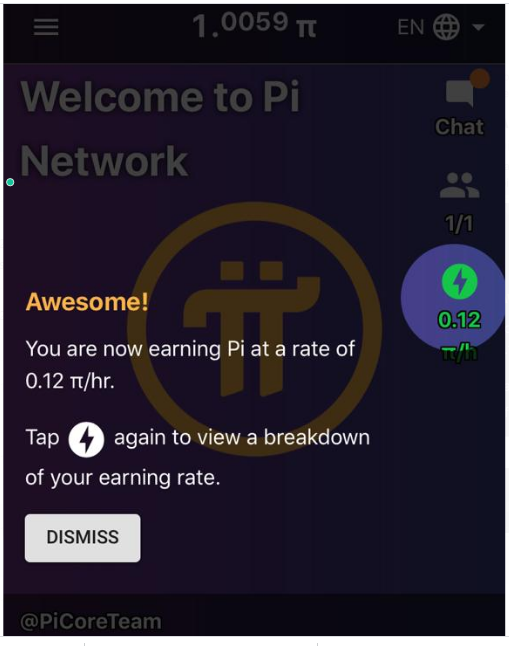
For a broader view, let’s take a look at the consensus protocol and mechanism used in mining the Pi coin.
A Consensus Mechanism is a mechanism used in blockchain and computer systems to achieve an agreement on a single state of the network among multiple agent systems or distributed processes i.e. the way an agreement is reached.
https://www.nigeriabitcoincommunity.com/bitcoin-mining/
The Pi network uses the Stellar Consensus Protocol and Federated Byzantine Agreement (FBA) as its protocol and consensus mechanism respectively.
Based on SCP and FBA, different nodes on the Pi network exchange network messages to come to an agreement on what the next block should be.
When messages are sent to the network, multiple rounds of voting are used to determine the next block.
Following the SCP, each node has different nodes in its circle. So, a set of nodes choose a node to trust and convince other nodes to do likewise.
This is different from the ‘proof of work’ consensus mechanism, where different nodes solve a difficult math problem to determine the next block.
Here, instead of proving a work, different nodes try to prove that a particular node is trustworthy.
Additionally, Pi Network employs the Byzantine Fault Tolerance (BFT) algorithm to ensure that there is no central authority.
BFT is also used by NEO and XRP blockchains.
Please note:
- This mining procedure will only be effective when the Pi network launches its mainnet.
- Nodes on the Pi network will include mobile phones, laptops, and desktop computers.
Next, I explained the different roles users can play on the Pi network.
Keep reading!
3. Roles Of Users On The Pi Network
i. Pioneer: This is the first role a user assumes once he registers on the platform.
All there is to do is to open the app daily and tap the mining symbol.
ii. Contributor: For a user to be a contributor, he must have completed 3 earning sessions as a Pioneer.
A contributor earns at a higher rate by adding other members to his security circle.
Security circle refers to 3-5 members in an earning team because they trust each other. You choose who you want to be in your circle.
This role helps the Pi network to secure transactions.
iii. Ambassador: A user becomes an Ambassador by inviting people to join the platform.
Ambassadors earn up to a 25% bonus on their base mining rate for each person they invite.
iv. Node: This is a user that joins in running the blockchain of the Pi network.
The role will become effective when the desktop app of the platform is launched.
Moving on, we’ll discuss the development plan of Pi.
Tag along!
4. Understanding The Pi Development Plan
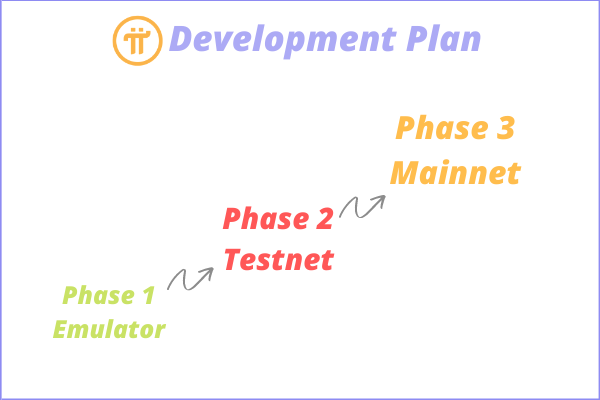
Phase 1 – Pi network emulator
This is a mirror of what the Pi Core team is trying to achieve when the mainnet is launched.
It focuses on improving user experience and behavior.
Also, Pi coins are minted here and users have their coins stored in the mobile app (or wallet if you prefer).
All account holder balances in this phase will be minted in the genesis block of the mainnet.
That way, early pioneers can retain their funds.
Phase 2 – Testnet
Here, the Pi node software is launched on the testnet, where the Pi Core team will host several nodes.
This testnet will run alongside the Pi emulator and results will be compared periodically.
Pioneers and developers are encouraged to start their nodes on the Testnet.
Thus, they can promote and implement fixes for the network.
Phase 3 – Mainnet
This is the final phase of the Pi network. It is a decentralized open source platform where developers can implement changes and update the software.
At this stage, Pi will be connected to exchanges and can then be exchanged for other currencies.
Also, the Pi emulator will be closed and fake/duplicate accounts will be discarded.
Only verified account holders will be moved to the mainnet.
Now, let’s look at the Pi coin roadmap
5. Pi Coin Roadmap
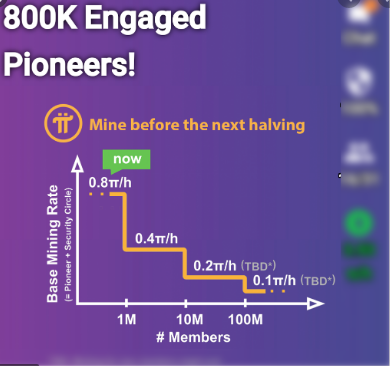
From the image above, the Pi coin mining rate halves after the network membership increases by an exponential of 10.
Initially, the coin was mined at 0.8pi/hr. But presently (22/01/2021) the mining rate is 0.2pi/hr. with 10M+ users on board.
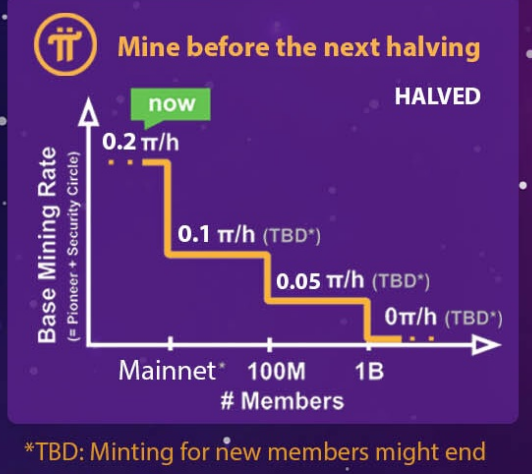
Also, the mining rate of a user increases when he becomes a Contibutor and or Ambassador.
The essence is to increase the scarcity of Pi coin, which is needed to control and increase its value.
The simplicity of Pi notwithstanding, it does attract controversies.
So, in the next section, we’ll look at the benefits and downsides of having the Pi coin.
Read on!
6. Benefits & Downsides Of Having The Pi Coin
Benefits
a. You will not miss out on the huge returns when the Pi coin hits big.
There is no way to prove that Pi will do as well as bitcoin did but there’s a slight chance that it would. When it does, early investors will earn more.
b. By the time the Pi coin is listed on exchanges, it will have a price value. So, you can sell your coins and make some money.
c. Right now, there is no use case attached to this coin.
Eventually, when a use case is attached, early investors will have enough coins to make a transaction.
d. Initially, the mining rate of Pi was 0.8pi/hr rate. Now it is 0.2pi/hr.
This means that early pioneers earn at a higher rate than those who join later.
e. You can be a successful Pi miner without being a cryptocurrency expert or technology savvy.
f. On the other hand, if you are a developer and prefer technical stuff then the Pi phase 3 will favor you well.
You get to use the desktop app and a befitting programming language.
Downsides
a. The fact that Pi has no use case at the moment or a product gives it the appearance of a Pyramid scheme (which we don’t like).
b. Though the development team uses the Stellar Consensus Protocol (SCP) to confirm that users and their phones exist as trust nodes, there are unknown security risks of having this app on your phone.
c. Tapping on the mine button daily is quite annoying coupled with the fact that the coin may not be worth anything in the end.
There’s more, don’t stop reading!
7. Support Channels And Public Opinion
The Pi network has an FAQ page where users can find answers to any question they may have.
Also, it has a chat room where the users can communicate with each other. They can also make contributions to the platform here and get responses to their queries.
Additionally, the Pi core team notifies users of any development on the platform via the app.
Furthermore, users can reach the admins through these channels:
- https://www.facebook.com/PiCoreTeam/
- https://twitter.com/PiCoreTeam
- https://www.linkedin.com/company/pi-net/
- https://www.instagram.com/pi_network/
Then I checked Pi network on TrustPilot and it had an excellent rating with 333 reviews. Cool!
Pleased with what you have read so far? Then check the next section to see how you can mine the Pi Coin.
8. How To Mine The Pi Coin?
i. First, you will need an invite link
ii. Click on the link and hit ‘download’ when it opens
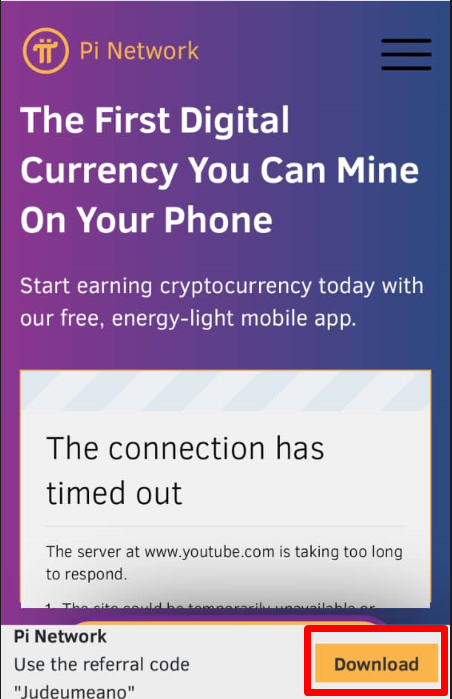
iii. Open the app after it has downloaded. Select how you want your account to be verified (Facebook or Phone number).
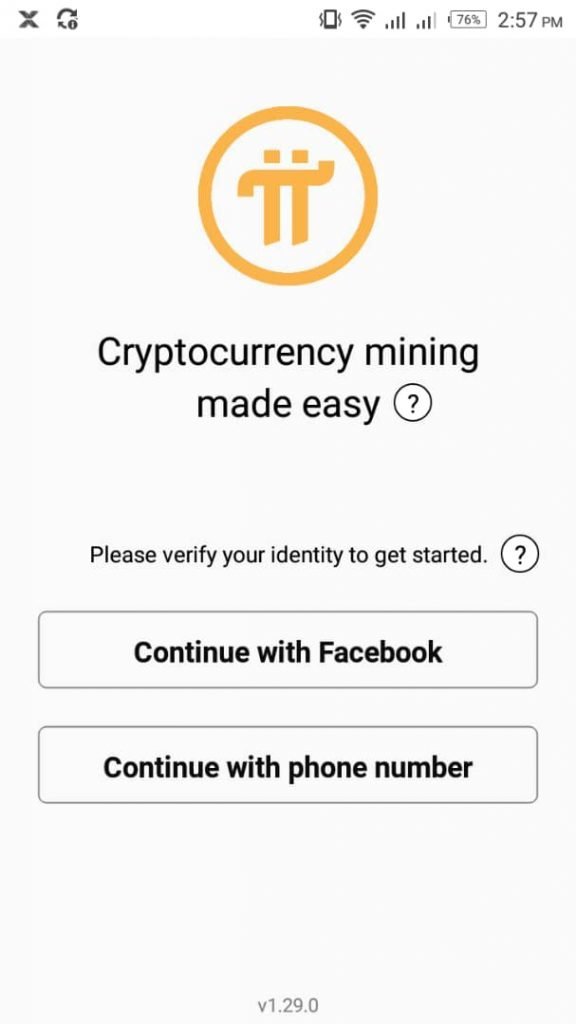
iv. Enter your phone number and hit ‘Go’. Then set up your password
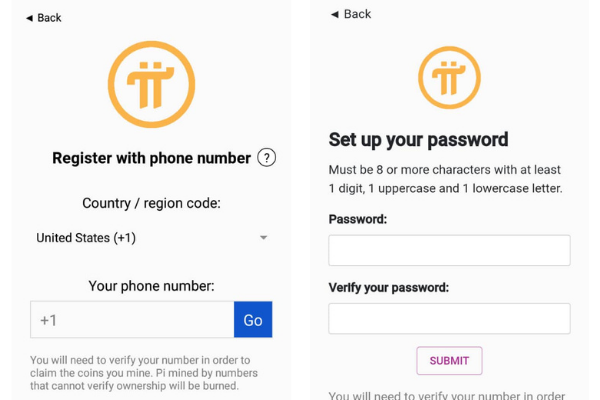
v. Next, complete the form to set up your account. Enter ‘judeumeano’ as the invitation code.
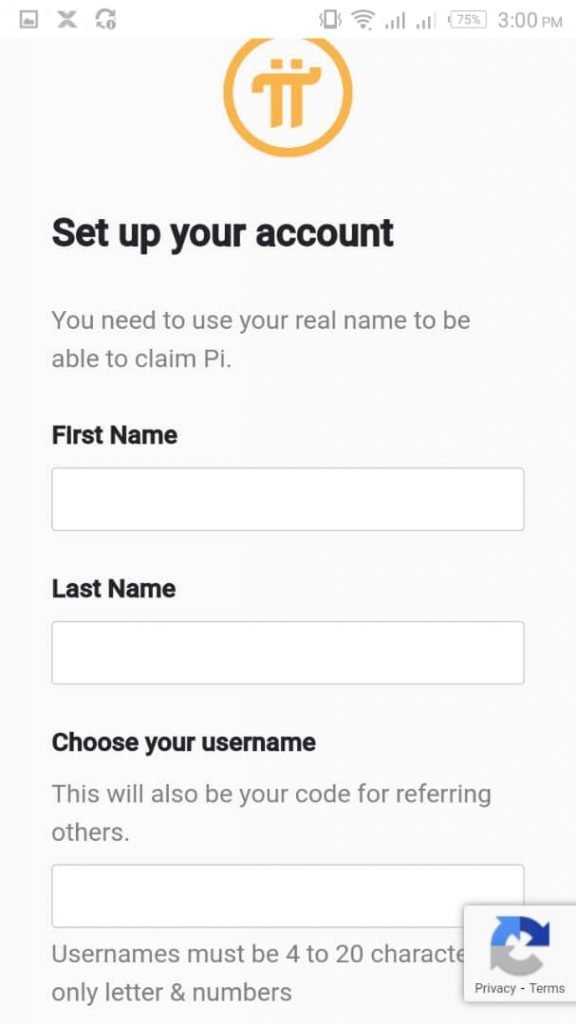
vi. After that, you’ll be redirected to the home page of the app. Click on ‘Get started’

vii. You will see the lightning symbol, tap on it and start mining

viii. Now, click on the ‘start tour’ option to get familiar with the app interface

ix. Next, verify your phone number (you can do this later).
x. Click on the menu button and select profile
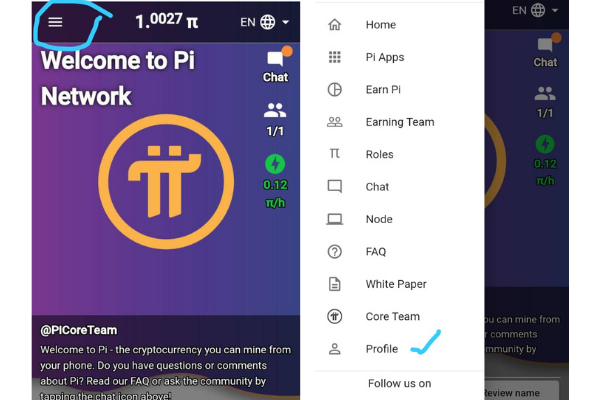
xi. Then hit ‘verify’ beside the phone number
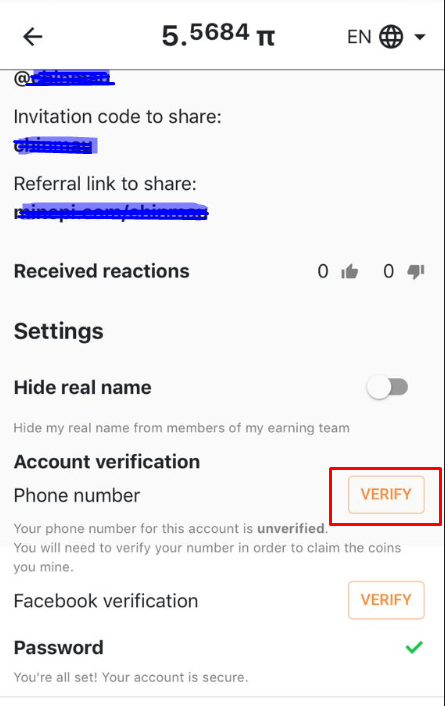
xii. Now, click on ‘start’ under ‘Option 2’ (Option 1 is for users in USA and Canada)
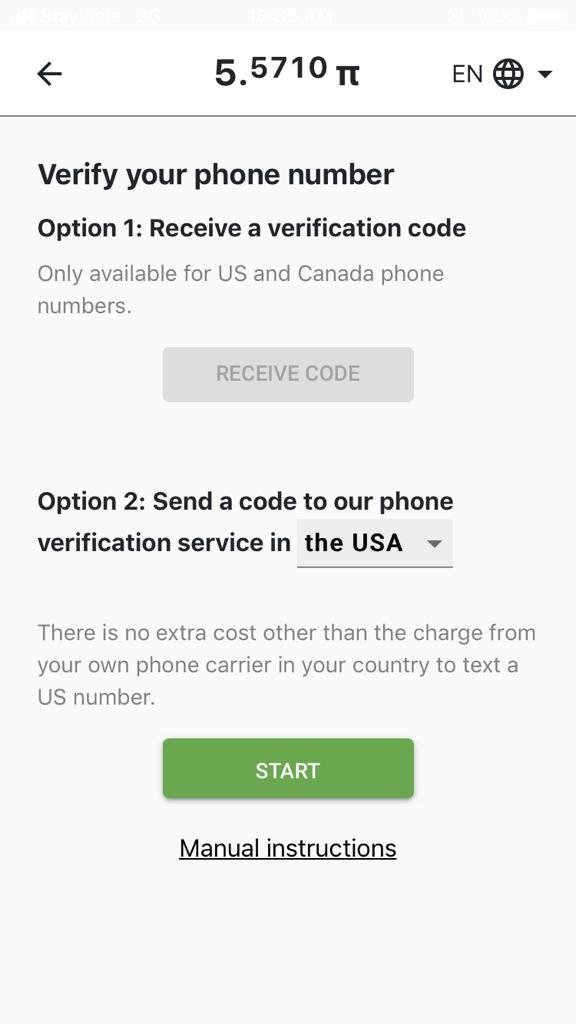
xiii. Send the SMS and you are good to go
xiv. Come back after 24 hours to tap and mine again.
But, is the future bright for Pi coin?
Find out in the next section.
9. What Does The Future Hold For Pi Coin?
Seeing that the Pi coin is following its roadmap consistently, it does hold the potential of doing well in the future.
Once a use case is attached to this coin, its value will continually increase.
Pi wants millions to adopt the coin before it obtains value and they are already achieving that.
The 4.6 ratings on Google Play with 172,914 positive reviews say a lot about this coin heading in the right direction.
Additionally, the Pi core team has plans of making the network more rewarding to the members.
These plans include:
a. Launching the mainnet and connecting the Pi coin to exchanges by the first quarter of 2022.
b. Expanding the channels hosted on the Pi network.
c. Revamping the network such that pioneers will own a certain amount of Pi before they can make suggestions for improvement.
d. Introducing the Pi marketplace where users will be paid for their attention when companies post ads on the platform.
e. Establishing Pi barter marketplace, where users get paid for their skills/products both from each other and the platform.
f. Developers will be enabled to build Dapps using Pi resources. And these Dapps will be able to interoperate with already existing Pi Dapps.
Impressive, huh?
Gratefully, users will still be able to mine Pi coin on their mobile phones after the mainnet is launched.
10. Pi Network Update (Pi Browser & Pi Wallet)
As Pi approaches its mainnet launch date, there have been some improvements on the network including:
- Pi Browser
- Pi Wallet
I described them below:
Pi Browser
The Pi Browser was created to provide a web experience.
It supports Web2.0 applications just like your regular web browsers.
That means, you can surf the internet via the Pi Browser.
Additionally, this browser is designed to host other Pi apps like the Pi wallet.
Features of The Pi Browser
- Search Box – where you can input your search requests
- Pi Chats – enables members and the Core Team to communicate, discuss and build the Pi community together.
- Pi wallet – where users can store Pi coins (more on that later)
- Brainstorm – enables pioneers to propose and vote for improvements on the platform
- Mine.Pi – serves the same function as the Pi mining app. Users can mine Pi here.
The Pi Browser has a user-friendly interface and you can download it from PlayStore or AppStore.
Pi Wallet
This is a multi-cryptocurrency wallet created for Pi users.
However, this wallet can only store Test-π for now. Users are given 100 Test-π once they download the wallet.
The Test-π is used to test transactions on the Pi Testnet and has no monetary value.
It is different from the real π that users have been mining on their mobile apps before now.
How to download the Pi Wallet
i. Open the Pi mobile app and click on ‘Create wallet’

ii. A new window will pop up. Select ‘Sign in to Pi Browser’

iii. You will be redirected to PlayStore or AppStore. Go ahead and install the browser.
iv. Next, you go back to the mobile app and click on ‘Sign in to Pi Browser’ again.
v. You will then be redirected to the browser. Now click on ‘wallet.pi’ and select ‘Generate wallet’.
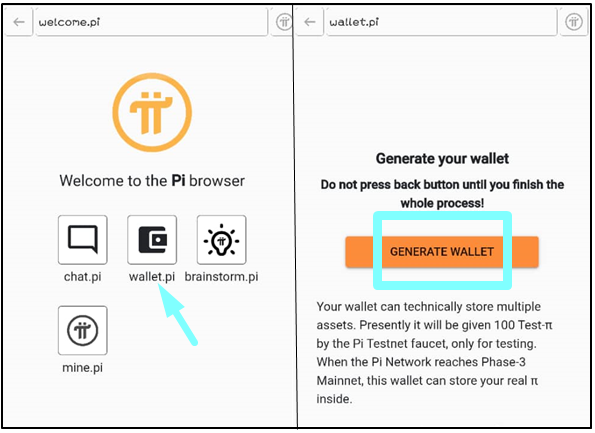
vi. If your phone is fingerprint enabled, select ‘Use fingerprint’ or ‘Use Touch ID’ (for iPhone). Otherwise, select ‘Show alternatives’
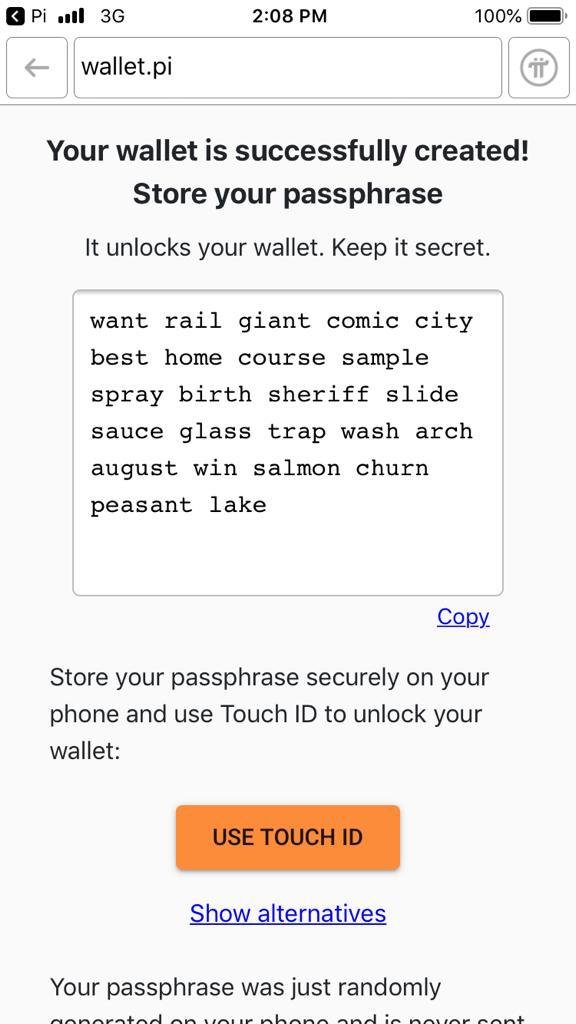
The fingerprint option enables you to access your wallet using your fingerprint.
If you choose ‘Show alternatives’, you will be provided with a Passphrase.
(Copy it and save it on your phone. You will need it whenever you want to use the wallet).
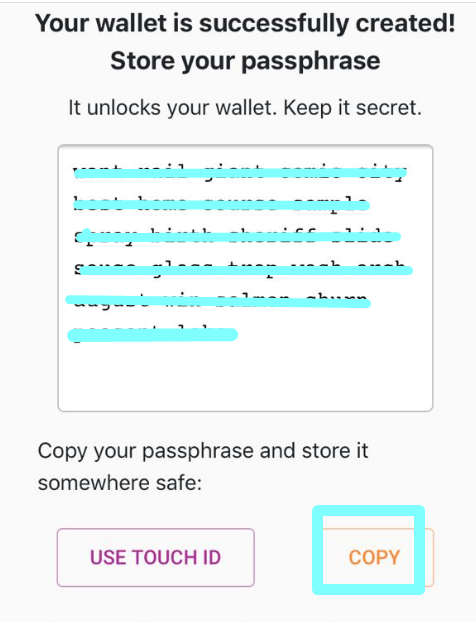
vii. Then click on ‘I saved my Passphrase’ to continue.
viii. Now input the Passphrase to access your wallet.
ix. Next, you will be given your wallet address. Again, copy and keep it safe. Then click ‘Continue’
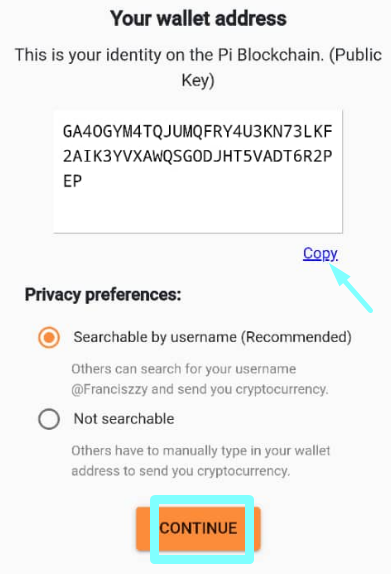
Viola! You’re in!
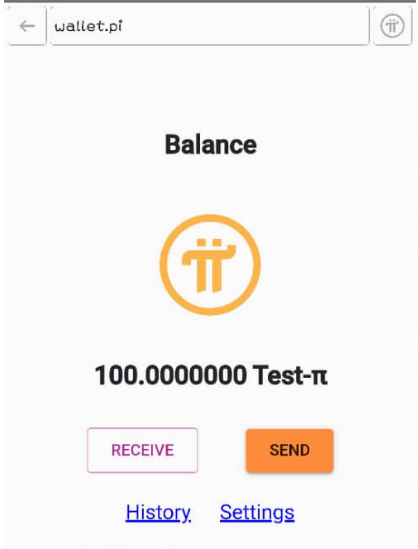
I’ll now show you how to ‘send’ and ‘receive’ Test-π on your wallet.
How to send Test-π
i. Open your Pi wallet and click on ‘Send’.

ii. Next you fill in the required details and hit ‘send’.

Confirm the address and click ‘send’ again to continue.
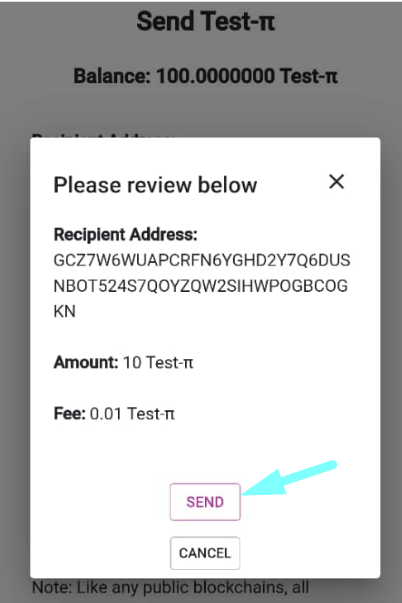
iii. You will receive a pop-up notification for a successful transaction.
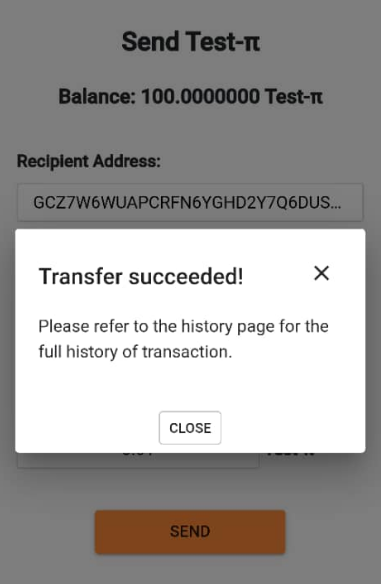
Thumbs up!
*Sending Test-π attracts a 0.1π transaction fee
How to receive Test-π
i. Send your wallet address to the person you’re expecting coins from
ii. Your wallet will be credited when the other party sends the coins.
*You can always check your wallet history to view all your transactions.
In the next section, I answered some questions on the network.
Tag along!
11. FAQs
No. Once the halving occurs, every user begins to earn at the new rate.
No. Every user is entitled to one account. Even if you want to use another device, it has to be the same account.
Yes. Developers will be able to test their nodes on the Testnet even after Pi launches its mainnet.
BTW.
If you want to learn how to trade cryptocurrencies profitably, then enroll in our Cryptocurrency Mastery Course by going to www.ctmastery.com. You can also join our Telegram community at https://t.me/ctmastery.
12. Conclusion
Pi Coin was created to give everyday people the opportunity to mine the coin from their mobile phones.
There is no telling how valuable this coin will be when the mainnet is launched. Meanwhile, millions have downloaded the app in case they get lucky.
And that’s all I have for you in this review. Now, I’d love to hear from you;
What do you think of the Pi Coin? Do you think exchanges will be willing to list it?
Will you download the app? If you already did, what has it been like?
And if you were asked to predict the USD equivalent of a Pi coin when the mainnet is launched, what will you say?
Let me hear your thoughts in the comments section right now.
Don’t fail to share this post with your friends, thank you!




I am hooked! Haha! You do great work on your outlook with crypto! Hoping you can do a review on Richard Hearts PLS ” Pulse ” token.
We will check it out.
Hello. While I enjoy your review on Pi Network very much. Clear step by step and facts along with conclusion which begs the question I wanted to ask if I may?
Im curious what your thoughts are after the MainNet launches? What will occur or what happens when PiNetwork is made into “public” for lack of better word.
Again thanks for your review.
Hello there, what happens when the mainnet launches is something I think we will have to wait out.
We will have to watch and see how events unfold.
Thank you.
Thanks a lot, I have downloaded it
Thanks a lot Chinma Udeji for this detailed article on the pi coin. I hope it fairs well in the market when it eventually goes public.